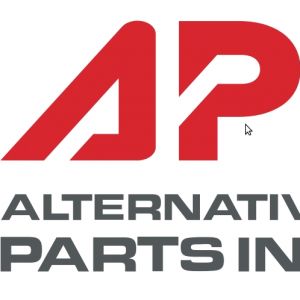A Detailed Overview About Achieving Better Bend Accuracy on A Press BrakePosted by Steven Glassner on May 20th, 2019 Compensation of the Deflection in the table of the press break and the beam is an essential thing in press brakes which guarantees proper repeatable results when you implement the load on it. Without compensation of deflection, it's likely that a workpiece would have some form of deformation on its center when bent along the full length of the press brake. In order to keep the bend angle uniform over the full length of the press brake part, it needs a crowning system. In this age of complex parts, quick turnaround, and short batches, crowning helps to maintain efficiency and repeatability. Let's see how in high-tonnage applications crowning helps to produce straight bends in high-tensile materials. What is Crowning? New age modern press brakes like Amada Press Brakes use a servo-hydraulic system in which a closed-loop system controls the position of the ram. At the corner of the beam, a position measuring system monitors the movement and accuracy of the beam. It does this by activating the left and right valves at the top of the position. During the bending period, the servo-hydraulic system makes sure that the piston at the ends of the beam reaches the programmed position in the machine control and finally resulting in the correct bend angle. Because press brakes tend to deflect under load, especially in the center of the machine between the pistons. It is an angle in the center of the press brake. Without intervention, it would cause the bend angle to vary over the length of the press brake. For the best results from crowning, it is advisable to use quality and modern press brakes. You can get them at cheaper rates as well by searching for "Amada Press Brake for Sale." The Origin In order to enhance the bending accuracy, it is important to have a crowning system which forms an opposite force to offset the deflection of the beam and the table. With the crowning system, you can ensure that the ram and table are parallel during bending. Plus, crowning is not something new in the business. It has been in the market since the 1970s. Each day its demand is increasing with high-tensile-strength steels. Before its existence, manufacturers had to pregrind the curve into the press brake table to offset about 75% of the deflection. In the present scenario, systems are more advanced. Operators can enter the sheet thickness, die opening, and material tensile strength data into the machine using crowning systems. By using the press brake's hydraulic system and crowning together, it can provide an accurate bend angle with minimum operator intervention. The Process You can utilize Crowning with the press brakes of 80-ton in weight, 8 ft or larger in size. You can apply it to lower-tonnage press brakes as well. However, it depends on the length of the press brake table and its application. If the distance is longer between the uprights, the higher the machine deflection. Simultaneously, the higher the tonnage of the machine, the more the need for deflection compensation arises. To bend the thick and thin materials, a crowning system is the best option always. There are two types of crowning available. Hydraulic and CNC mechanical wedge-style. You can purchase a CNC mechanical wedge-style crowning system as an add-on to a press brake through a manufacturer or tooling supplier. The CNC mechanical wedge-style crowning system can also be treated as one of the LVD press break parts. Hydraulic crowning is based in the machine. At the time of selecting between these two types, keep the cost comparison in mind but give more weightage to accuracy and efficiency. You can apply the hydraulic crowning to the cylinders which adds pressure on them during the process to maintain the machine deflection. These systems do not apply the crowning process across the entire bed of the machine. Instead, the deflection amount for which the crowning system adjusts for is dependent on the cylinder location. Some of the hydraulic systems use only a central cylinder or a three-cylinder system. It provides crowning over 60 percent of the bed. The hydraulic cylinders use the same line. As a result of it, no cylinder receives the full crowning force. All the hydraulic cylinders experience this force regardless of the numbers. Critical for Accuracy Crowning systems are more precise and capable these days. They can place more crowning in certain areas of the press brakes. As the manufacturing landscape changes, the crowning system has become a critical element to have in order to achieve accuracy and operations. Learn how you can achieve the high tensile and accurate bending results with the help of the different type of crowning processes with the press brakes.The crowning process is more critical for the LVD press brake parts , tridem, quadem which combines various press brakes of similar or dissimilar tonnage in a synchronized configuration. They synchronize the cylinders to ensure that there is a constant straight- line movement in the machine. Like it? Share it!More by this author |


